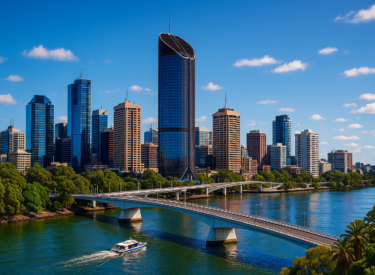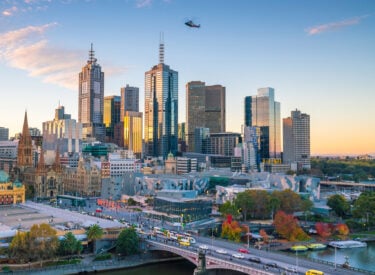
Key takeaways
Middle-ring suburbs are evolving due to state-led rezoning, medium/high-density housing, and the rise of 20-minute neighbourhoods.
These changes aim to reduce urban sprawl, increase housing supply, and make better use of existing infrastructure.
Whether you own a home, hold apartments, or are eyeing development sites, Australia’s middle-ring transformation is creating new upside.
Rather than seeing urban transformation as a threat, it’s a once-in-a-generation opportunity.
Australia's middle-ring suburbs are undergoing a significant transformation, driven by a combination of state-led rezoning initiatives, the introduction of medium- and high-density developments, and a strategic shift towards creating "20-minute neighbourhoods."
This evolution presents both opportunities and challenges for existing homeowners and investors.

Embracing the 'missing middle' in urban planning
The term "missing middle" refers to the lack of medium-density housing options, such as townhouses, duplexes, and low-rise apartments, that bridge the gap between single-family homes and high-rise towers.
Historically, Australia’s housing landscape has been characterised by either low-density outer suburban sprawl or large-scale apartment blocks in urban cores, resulting in a stark divide in housing availability and affordability.
To correct this imbalance, various state governments - particularly in New South Wales Victoria, and the ACT - are introducing planning reforms that encourage medium-density infill housing in established suburbs designed to unlock underutilised land near existing infrastructure, create more housing choice, and reduce urban sprawl.
However, not everyone is on board.
Local councils, under pressure from vocal constituents who don’t want their neighbourhood character to change, are often pushing back against these proposals.
These constituents - often labelled NIMBYs (Not In My Backyard) - fear increased traffic, parking shortages, loss of privacy, and changes to the "leafy" character of their streets.
In turn, councils are implementing height restrictions, design overlays, and delaying rezoning approvals in an effort to appease existing residents.
This tension between state government objectives and local council resistance continues to slow down the rollout of much-needed housing diversity across our middle-ring suburbs.
Nonetheless, the push for the missing middle is gaining traction, as the need for more housing and better land use intensifies, especially in suburbs well served by transportation and amenities.
The rise of 20-minute neighbourhoods
The concept of the 20-minute neighbourhood is central to contemporary urban planning strategies, particularly in Melbourne's "Plan Melbourne 2017-2050."
The idea is to create communities where residents can access most of their daily needs, such as shops, schools, parks, and public transport, within a 20-minute walk or cycle from their homes.
This approach promotes local living, reduces reliance on cars, and fosters healthier, more connected communities.
Pilot programs in suburbs like Strathmore, Croydon South, and Sunshine West have demonstrated the potential of this model to enhance liveability and sustainability.
Implications for property owners
1. Increased Land Value Through Rezoning
Properties located near transport hubs or shopping strips that are rezoned for higher density will experience significant value appreciation.
Developers often seek to amalgamate such sites for larger projects, offering premiums to current owners.
2. Enhanced Local Amenities and Gentrification**
New developments often bring improved infrastructure, retail outlets, and public spaces.
This influx will revitalise neighbourhoods, making them more attractive to a diverse demographic, thereby increasing demand and property values.
3. Rising Demand for Established Apartments
With construction costs escalating, new apartments are entering the market at higher price points.
This scenario makes well-maintained existing family friendly apartments more appealing due to their relative affordability, potentially boosting their market value.
Challenges to consider
There is no doubt that the middle ring suburbs of our capital cities will look very different over the next decade, and while this will bring many benefits, there will also be challenges.
1. Potential Oversupply in Certain Areas
Rapid development can lead to an oversupply of apartments in specific locales, potentially stabilising or even reducing prices in the short term.
We saw this during the property construction group of 2014 – 17, when some locations just had too much speculative development.
While it’s likely new apartment development will roll out more slowly this time round, investors should monitor local development pipelines and vacancy rates to make informed decisions.
2. Impact on Low-Density Residences
Homes adjacent to new high-density projects might experience increased traffic, noise, and reduced privacy.
However, properties slightly removed from these developments will benefit from improved amenities without the immediate drawbacks.
3. Necessity for Property Upgrades
To remain competitive, owners of older apartments will need to consider renovations to match the appeal of newer constructions.
There’s nothing new about this - modernising interiors and amenities enhances rental yields, gives you a wide selection of potential tenants and improves the value of your property.
A golden opportunity for strategic investors
While some homeowners may worry about the changes medium- and high-density developments bring to their suburbs, strategic property investors see the bigger picture, and it’s full of upside.
Rezoning in middle-ring suburbs is creating significant opportunities.
Properties close to transport hubs and vibrant local centres are becoming development hotspots.
As land becomes more valuable, savvy investors are acting decisively, unlocking the potential of these areas by buying older homes on sizeable blocks and building two townhouses where there was once just an old home.
But here’s the key difference: they’re not doing it to flip for short-term profit – they are holding onto these new townhouses as part of a long-term “build-to-hold” strategy.
This approach allows them to manufacture equity through development while also benefiting from growing rental yields, long-term capital growth, and depreciation benefits.
And because many of these projects are in gentrifying suburbs with improved amenity, growing populations, and increased demand for quality housing, the long-term upside is incredibly compelling.
This is exactly the sort of strategy Metropole has specialised in for decades- guiding clients from property selection, through development feasibility, planning approvals, and construction, all the way to managing the end investment.
We’re not in the business of selling properties - we’re in the business of helping our clients build lasting wealth.
In this new phase of urban transformation, where the ‘missing middle’ is finally being built and the 20-minute neighbourhood becomes a reality, the investors who understand the power of location, timing, and strategic development will be the ones who benefit most.
Even if you're not sitting on a development site, these changes are driving more people into previously overlooked suburbs, breathing new life into local economies and increasing demand for well-located established properties.
And with construction costs still high, the price gap between new and existing apartments will remain wide, pulling the value of quality older stock upwards.
In short, Australia's urban evolution isn’t a threat—it’s an invitation.
For those who understand the trends and invest with strategy, the next wave of growth will come not from chasing hotspots, but from riding the structural shifts reshaping our cities.
So rather than resisting the changes sweeping through our suburbs, the question investors should be asking is: how can I ride this wave of transformation to build intergenerational wealth.














